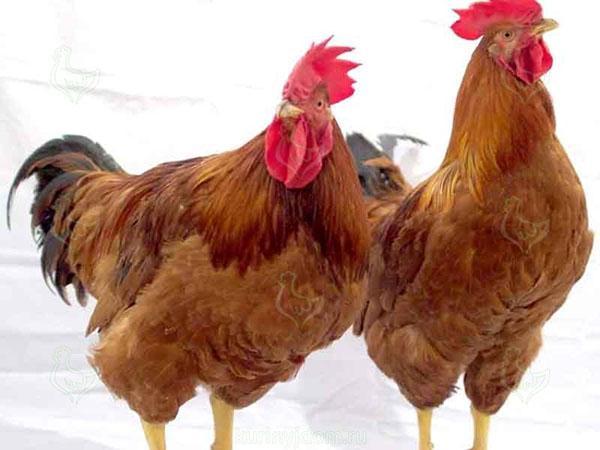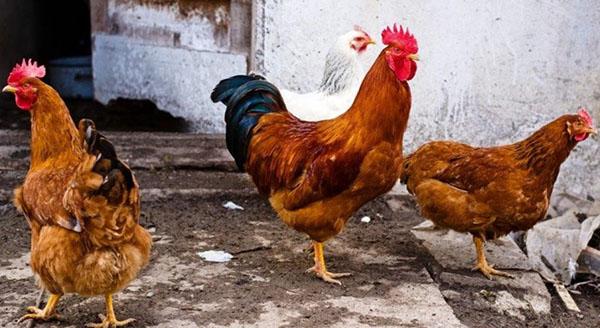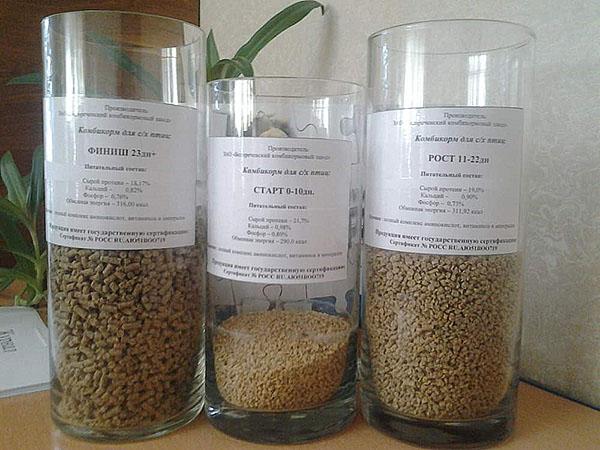Breeding Redbrough chickens in a private courtyard
 Breeding Redbrough chickens involves many aspects - from proper nutrition to production. This breed is a hybrid of Malay fighting rooster and Cornish chicken.
Breeding Redbrough chickens involves many aspects - from proper nutrition to production. This breed is a hybrid of Malay fighting rooster and Cornish chicken.
It was bred in England over 100 years ago. It gained the greatest popularity in the USA and France.
Breeding Redbro chickens - breed description

The poultry of the egg-meat direction has the following characteristics:
- the head is large, the beak is strong, of medium size, the crest is leaf-shaped;
- comb, earrings and lobes of red color;
- the neck is medium in size, set high, bent upward;
- the body is horizontal or slightly inclined;
- the back is flat;
- the wings are small in size, tightly pressed to the sides;
- plumage of a red hue, sometimes brownish-red;
- the rooster has a tail with black feathers;
- metatarsus yellow without plumage;
- the weight of an adult rooster, which is reached by 4-5 months, is 4 kg, laying hens - 3 kg;
- number of eggs 230-300 pcs. per year, with a mass of 65-70 g.
The description of the Redbro chicken breed also includes the timing of weight gain. So, by the 2nd month, chickens already weigh 2.4-2.6 kg. Powerful legs are set wide apart, muscles are clearly visible under the plumage. Chickens have a calm, livable character, so it can be kept with another bird. They love free placement, which makes cell placement undesirable. It is better to use a spacious room with free range.
When breeding Redbro chickens, the temperature regime should be observed - it should not be less than 7 ° and more than 25 °. In everything else, the bird is very unpretentious, its maintenance is simpler than broilers and other breeds.
Combined feed consumption
The consumption of compound feed depends on the age of the bird.
| Bird age | Amount of compound feed, g |
| 2 weeks | 100-150 |
| 3 weeks | 180-200 |
| 1 month | 200-220 |
| 5-6 weeks | 230-240 |
| 4-5 months | 300-350 |
In order to lay 1 egg, the chicken needs to eat:
- grains - 500 g;
- wet mash - 30 g;
- boiled potatoes - 100 g;
- cake - 10 g;
- hay flour - 10 g;
- milk or whey - 80 ml;
- chalk and salt - pinch at a time.
It is also necessary to provide hens with clean water, access to which must be unimpeded.
Composition of compound feed
 Redbro can be fed with "Start", "Growth" and "Finish".
Redbro can be fed with "Start", "Growth" and "Finish".
| Name | Start (25 g for 1 chicken) | Height (90-120 g per chick 2-4 weeks old) | Finish (140-160 g for 1 chicken from 1 month) |
| corn | 50% | 48% | 45% |
| wheat | 16% | 13% | 13% |
| cake or meal | 14% | 19% | 17% |
| barley | 8% | — | 8% |
| low-fat kefir | 12% | — | — |
| fish or bone meal | — | 7% | 7% |
| feed yeast | — | 5% | 5% |
| dry return | — | 3% | — |
| grass | — | 3% | 1% |
| feed fat | — | 1% | 3% |
| a piece of chalk | — | — | 1% |
Mineral supplements are especially important for poultry, which are placed separately or given together with compound feed.
Conditions of detention and food
 When breeding Redbro chickens, their severity should be taken into account and the bird should be kept on the floor or on low perches.
When breeding Redbro chickens, their severity should be taken into account and the bird should be kept on the floor or on low perches.
Small wings will not be able to keep chickens from falling, so high perches with stairs are excluded.
Day-old chicks should constantly have fresh cottage cheese and milk, as well as chopped greens and a grated egg. Feeding mature Redbro chicks should include dry and moist mash. An adult bird loves vegetables and fruits. In the presence of fruit trees on the site, she gladly pecks up an overripe padanka. Also in the diet should be small pebbles and shell rock or chalk.
The conditions for keeping Redbro chickens do not differ from the basic principles of breeding poultry:
- spacious chicken coop;
- feeders, drinkers, perches;
- the presence of a container with sand or ash for dry baths, which will protect chickens from parasites;
- straw bedding needs to be renewed every 5-7 days, since Redbros are very clean;
- periodic disinfection of the chicken coop;
- whitewashing of walls and ceilings.
The room is treated with 2% caustic soda solution, 4-5% creolin or 35 formalin, followed by airing for a day or two.
The chicken coop is made no higher than 180 cm. The dimensions of the structure are calculated from the fact that for 1 sq. m can accommodate 2 birds. The depth of the nest should be 35 cm or more, and the height should be over 30 cm. Wood shavings, straw or hay are used as bedding.
Chicken keeping
 Small chicks need temperatures up to 34 °. It must be reduced by 2 divisions every 3 days. Thus, by 2 months the bird will feel good at 18 °. Overheating for poultry is extremely undesirable and the temperature should not exceed 27 °. You should also avoid drafts and high humidity.
Small chicks need temperatures up to 34 °. It must be reduced by 2 divisions every 3 days. Thus, by 2 months the bird will feel good at 18 °. Overheating for poultry is extremely undesirable and the temperature should not exceed 27 °. You should also avoid drafts and high humidity.
Compliance with the light regime is very important. At the beginning of raising Redbro chickens at home, it should be constant. Then the light is turned off for a few minutes, gradually increasing the time so that by 4-5 months of age, continuous illumination is 12-14 hours.
The length of daylight hours affects:
- egg production;
- quality and weight of eggs;
- growth processes in chickens;
- rest of chickens;
- health;
- carcass weight.
In summer, in bright sun, the chicken coop should be shaded to avoid the bird pecking eggs, reduced productivity and increased aggression.
Turning off and turning on the light should not be abrupt, since all processes in the body of chickens are subject to the regime of day and night.
Pros and cons of the breed
 Redbro does not have ulcers and bedsores due to good feathering, light body and mobility. They are resistant to common chicken diseases such as typhoid, coccidosis, pasteurellosis, salmonellosis. However, this does not cancel vaccination.
Redbro does not have ulcers and bedsores due to good feathering, light body and mobility. They are resistant to common chicken diseases such as typhoid, coccidosis, pasteurellosis, salmonellosis. However, this does not cancel vaccination.
In addition, they have:
- delicious fibrous meat;
- a lot of eggs;
- good survival rate of chicks;
- tendency to fattening;
- fast weight gain;
- endurance and good adaptation to conditions of detention;
- external appeal.
Redbro chickens are well bred. They have a pronounced maternal instinct, are excellent hens and sit on eggs with pleasure. You can also hatch chicks using an incubator.
The disadvantages include the late maturation of layers, in comparison with broilers, slower growth and a greater amount of feed consumed.